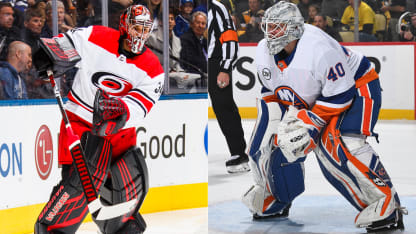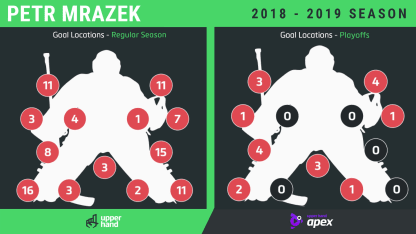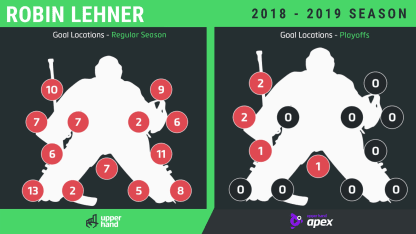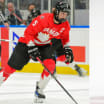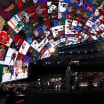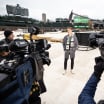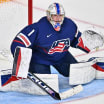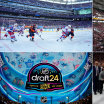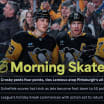Tips versus screens: Improved traffic management is something Lehner talked about this season, working with his defense in terms of picking which side each is responsible for, and it was on display with several great saves through screens early against the Penguins. But he also tends to sit behind opposing screens a bit deeper in his crease, creating additional exposure on deflections, which accounted for three of the six goals he allowed in the series. That mirrors a trend from the regular season. Lehner allowed 12 goals on screens, but deflections created 22. Ten of those goals were against the grain, catching him moving in one direction while the tipped puck went the other way, and the extra movements from a deeper position were a factor in two goals against the Penguins.
Second chances and sharp angles: Pittsburgh failed to score a rebound goal, but second chances accounted for 25 goals in the regular season. The highest number of rebound goals (10) came off low-to-high plays from sharp angles and these actions were a factor in nine other goals. Lehner has tightened and simplified his movement patterns and technical elements but exits from post play remain a work in progress. The Islanders are forcing play to the outside and making it hard to get pucks to the net, so sharper-angle shots aren't a bad option for creating rebound chances.
Along the ice: Speaking of second chances, Lehner prides himself on a willingness to go outside of the box with reactive saves, but that also includes a tendency to lift and reach with his left leg pad on lateral plays and rebounds in tight. Though the instinct for shooters is usually to elevate these chances, a shot back along the ice isn't a bad option against Lehner. It played a role in five of the 14 five-hole goals that went under his left pad, and the space under the pad was open 4:31 into Game 1 for Penguins forward Patric Hornqvist, who instead tried to elevate in tight and shot right into Lehner's raised pad.
Blocker side?There weren't enough goals scored by Pittsburgh to read too much into five of six going in on the blocker side, especially since his mid- and high-blocker totals (18.3 percent) weren't much above the 17.2 percent average in the regular season. Still, Lehner is more likely to turn on shots to his blocker side instead of cutting off pucks in front of him, a tendency that appeared to improve as the season went on but is worth watching again.
---
Listen: New episode of NHL Fantasy on Ice podcast
